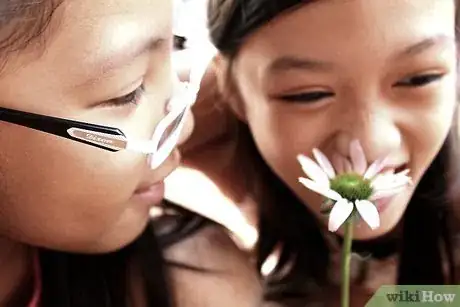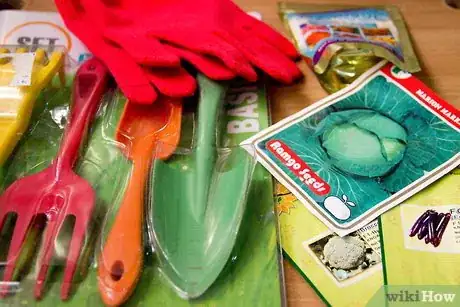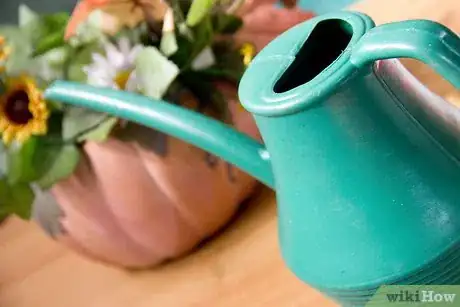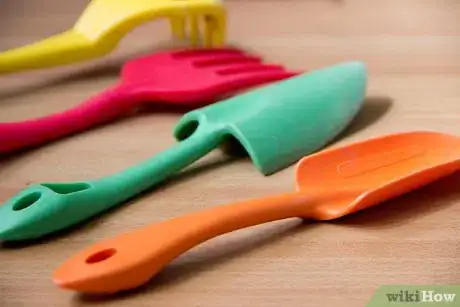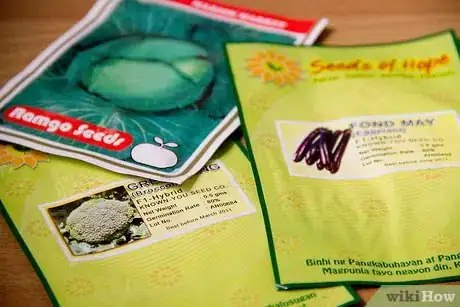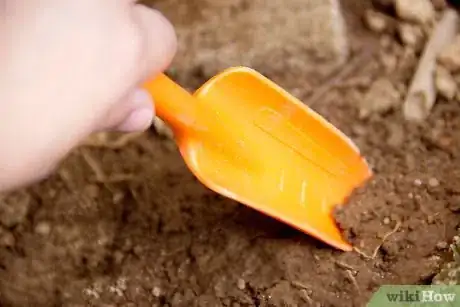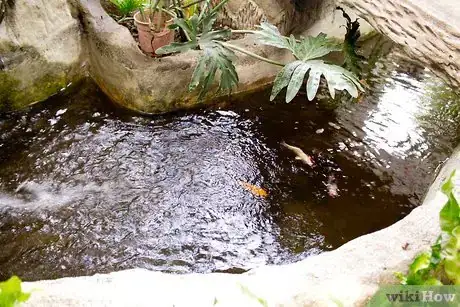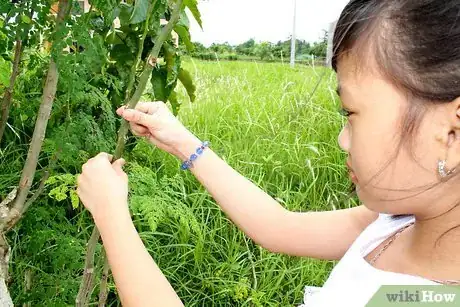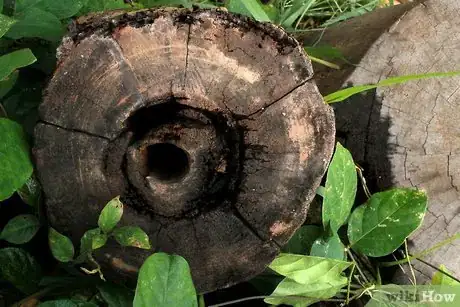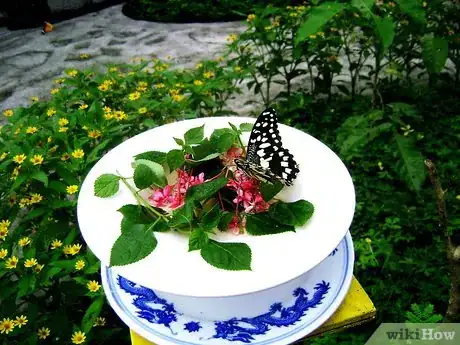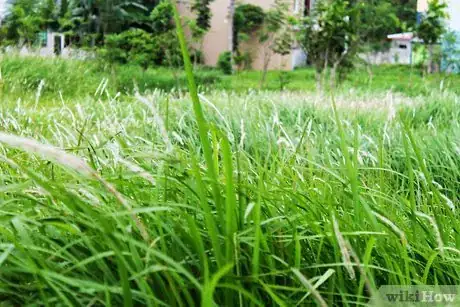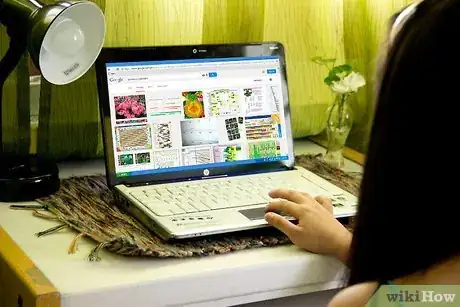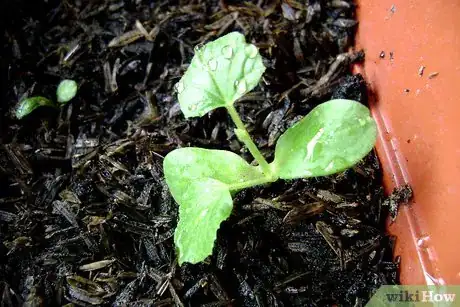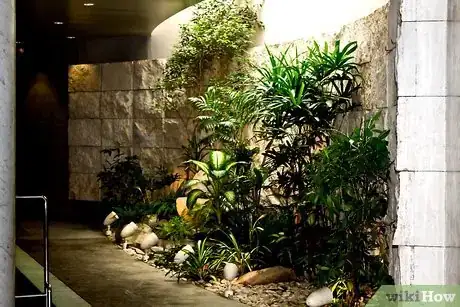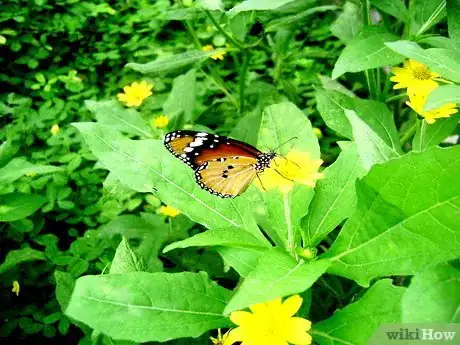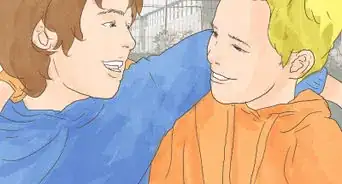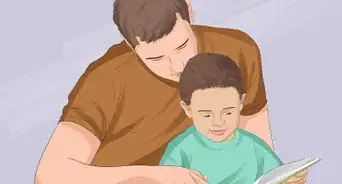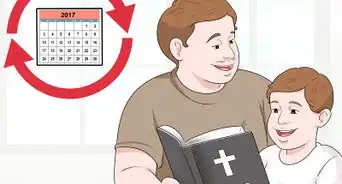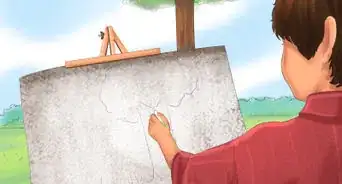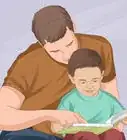wikiHow is a “wiki,” similar to Wikipedia, which means that many of our articles are co-written by multiple authors. To create this article, 12 people, some anonymous, worked to edit and improve it over time.
wikiHow marks an article as reader-approved once it receives enough positive feedback. In this case, 93% of readers who voted found the article helpful, earning it our reader-approved status.
This article has been viewed 96,354 times.
Learn more...
If you'd like your kids to grow up loving gardening and learning how to grow their own food, it's never too early to get started. While there are many ways to get your kids interested in gardening, here are some suggestions to get you started.
Steps
-
1Focus on making it fun and exciting. When children realize how many interesting, intriguing and even gross things there are to be involved in, they'll be more likely to want to get involved. Whenever planning anything, work out the fun angle, to keep your children's interest engaged.
-
2Kit out your kids. A big part of the fun is having the right tools and there are many gardening tools made just for kids, in their size, and in wonderful colors. Colorful tools, while not essential, are a helpful way to encourage kids to join in. Gardening gloves for kids often come in wonderful colors and patterns too and each child should have a pair of his or her own.
- Buy a pretty watering can which suits the child's size and strength. This will encourage him or her to keep watering the growing plants.
- Show children how to clean and put away tools after use. Make this easy and fun too––a bit of splashing about should be part of the cleaning chores.
Advertisement -
3Choose plants that are easy to grow. While it's important to involve your children in choosing the plants, make sure that the choice is from plants likely to be as trouble-free as possible, especially for beginner gardeners. Also choose a few plants that will produce a delicious edible harvest for your children to pick and take straight to the table from the garden. Some good starter choices include:
- Sunflowers
- Radishes
- Squash
- Tomatoes (from seedlings)
- Lettuces
- Peas and beans
- Sweet peas, poppies, alyssum, marigolds, pansies or nasturtiums.
-
4Show your children the basics of planting seeds and seedlings in the ground. Do the hard work of tilling the soil and adding the nutrients for them––they can learn about that later. For now, give them the joy of planting, watering and waiting for their little plants to sprout.
- For very small hands, make the job even easier by planting the seeds in cardboard egg cartons. When it comes time to transfer the seedling (or the seed) to the soil, cut out each little egg holding portion and let your kids plant the whole thing into the ground. The carton will disintegrate and no seeds or seedlings get lost in the transition.
-
5Include wildlife in your child's gardening experience. Add a birdbath, bird feeder and feeders for any furry wildlife such as squirrels, hedgehogs, possums, or whatever it's okay to attract to your yard. If you have space, include a small pond for fish. Children will love the experience of seeing animals in the garden.
- Tell children which animals should not be attracted to your garden! Help them to understand the beneficial role of animals in gardening, as well as pest problems.
- If you have a large garden, you might include more pets, such as a rabbit or guinea pig enclosure, a goat or sheep, etc.
-
6Show children how to grow plants from cuttings. This will amaze them endlessly, to see how you can take a cutting and get a new plant. Try plants that take easily to begin with, such as succulents, begonias, pelargoniums and bromeliads. They can experiment with harder ones as they become more experienced.
-
7Make things for the garden. Get crafty with the kids and recycle, repurpose and remake things that can serve as decorations or tools in the garden. There are lots of possibilities, including:
- Turning an old tire into a garden bed or plant protector
- Making herb or plant markers from iced confectionery sticks
- Painting a planter or flowerpot container in bright colors and designs. Be sure to say how pretty their own flowers would look inside it.
- Make a scarecrow to frighten away the birds; or make bird frighteners using old CDs, bits of unwanted foil and clothing, etc.
- Make a dangling decoration from shells, beads and pebbles, using thread or fishing line.
- Turn coconut shell halves into seedling pots––clean the inside, paint the outside like a face and anything that sprouts will seem like hair.
- Make a bird feeder
- Design a garden plan.
-
8Decorate the garden with your kids' art and craft efforts. After you've made the objects, or purchased some at the garden center with your kids' agreement, have the kids decide where they'd like the garden decorations to go. Encourage continued decorating projects, including removal of decorations that have become a little worse for wear over time.
-
9Talk to your kids about the importance of native vegetation in gardens. Explain that while it's fun to grow flowers and veggies, care needs to be taken to prevent non-native plants from escaping the garden and invading the local environment. Show them how to control weeds and how to keep strong growing plants under control. Explain to them why you cannot grow some plants in the garden, such as plants that are considered to be invasive species. Encourage them to learn as much as possible about native plants and how to care for these.
-
10Acknowledge the place of the digital era in gardening. Kids love computers and electronic gadgets and it can be hard to get them off sometimes. However, you can make the most of their affinity for all things electronic and have them download a suitable gardening app or two, and by doing research about their garden and its plants online. Gardening calendars are another useful tool found in many online gardening sites. And as the kids get older, help them to use the internet to search for harder garden projects, like making a sundial, building a chicken coop or rigging up a solar power warming pad. Encourage the exchange of knowledge online into real achievements in the garden––this is a good lesson in ensuring that they see the computer as a tool in wider life activities.
-
11Show kids how to compost. It can be a lot of fun seeing kitchen scraps turn to fertile soil in time. Make sure that they don't get rostered to do compost deliveries every day though, or they'll resent it! Share the task around. Another great way to enthuse kids about compost and fertilizer is to get a worm farm. Show them how it works, how to feed the worms and how to handle them. They'll probably start naming the worms and wanting to see them regularly.
-
12Keep gardening even when the season changes. Bring the garden indoors for winter, so that your kids can still enjoy the benefits of growing plants and learn how some plants can actually thrive in an indoor environment. Good choices include a small herb garden, a windowsill planter, a terrarium built in an unwanted fish tank, or a window box.
- Another idea for an indoor growing project is to grow a bulb in a bottle. Fill a bottle with water and place a hyacinth bulb at the top. Task your kids to keep the water level topped off and to wait for roots to develop. As the roots come on, tell them to be patient for the flowers to appear. You get both a gardening lesson and a beautiful table centerpiece from the one project!
-
13Keep making gardening an exciting experience and be enthusiastic about it. Gardening is an experience for life and one of the lessons it teaches children is that there is a season for everything and that it all cycles again. Learning this can be highly beneficial, especially for children prone to spending a lot of time indoors and in cars going to other indoor places.
Community Q&A
-
QuestionI was recently asked to teach a children's garden club. What would be some of the curriculum?
 FaithtychCommunity AnswerReally, they just have to know what to do to make a garden grow. Have them plant different flowers in flower pots with dirt, seeds, and some water, and teach them how to care for the plants.
FaithtychCommunity AnswerReally, they just have to know what to do to make a garden grow. Have them plant different flowers in flower pots with dirt, seeds, and some water, and teach them how to care for the plants. -
QuestionHow can I plan an outdoor project for grade 2 learners to indicate respect for plants and their importance?
 Cecilia FloresTop AnswererWhen I was in second grade, we grew a flower from a seed and cared for it until it was a little bud, then we brought it home. We learned about pollination, bees, and the stages of plant life.
Cecilia FloresTop AnswererWhen I was in second grade, we grew a flower from a seed and cared for it until it was a little bud, then we brought it home. We learned about pollination, bees, and the stages of plant life. -
QuestionWhat's the best curriculum for teaching two to four year olds about fruits and vegetables?
 Community AnswerGo to your local library or book store and look for books that you can read to them on the subject.
Community AnswerGo to your local library or book store and look for books that you can read to them on the subject.
Warnings
- Always supervise children using garden tools.⧼thumbs_response⧽
- Ensure that children understand how to be careful whilst using some of the tools. In particular, show them how to hold tools when moving around and using them and to never run when holding such items.⧼thumbs_response⧽
- If your children like eating anything they touch, supervise closely to prevent them from eating something poisonous. Teach them to leave unknown berries, leaves and flowers alone. Teach them which plants are safe to eat.⧼thumbs_response⧽
- If there are nasty pests in the garden, like spitting caterpillars, teach your kids to recognize them and to stay aware from them. Teach children to never disturb ant, wasp or bee nests either; teach respect, not disgust for such creatures.⧼thumbs_response⧽
- Don't spoil your child by giving them lots of rewards. Gardening and growing is a reward in and of itself.⧼thumbs_response⧽
Things You'll Need
- Gardening tools for kids
- Gardening gloves for kids (and perhaps a kneeling pad)
- Plants, seeds, seedlings
- Garden plot
- Flowerpots
- Craft and recycling items
- Online access and garden books suitable for kids
